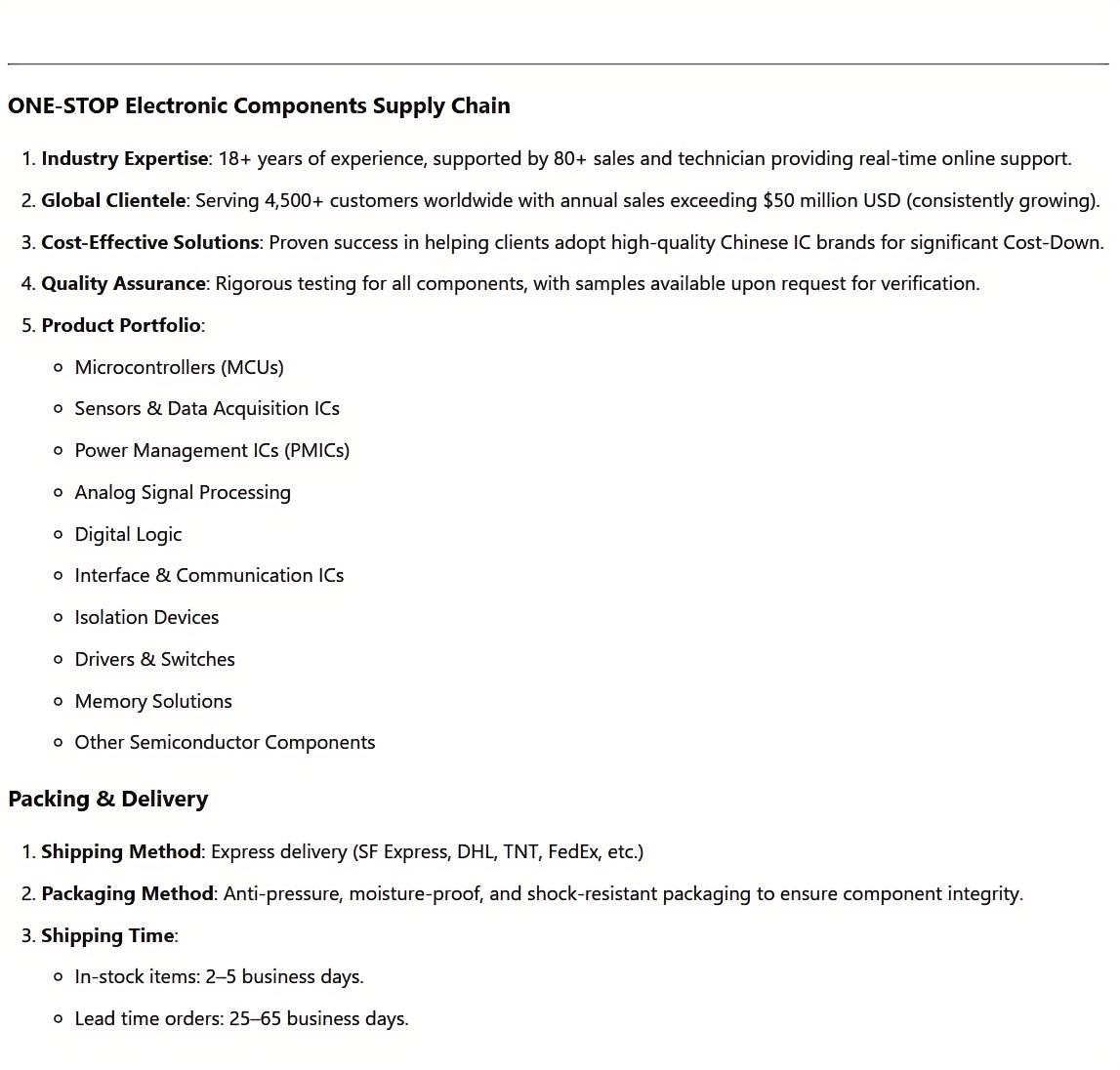GD32L233CCT6 is a Replacement parts of
R7FA2L1A92DFL#AA0
Mfr.Part No. :
GD32L233CCT6Manufacturer :
GigaDeviceDescription :
ARM® Cortex®-M23 32-bit MCUPackaging :
TRAYPackage :
LQFP-48Stock :
in stockPrice :
$0.9-$1.3
GD32L233CCT6
| Price: | $0.9-$1.3 | $2.2-$3.5 |
|
Replace parts:
Replacement parts:
Alternative parts:
Pin to pin parts:
|
GD32L233CCT6 |
R7FA2L1A92DFL#AA0
|
The GD32L233CCT6 is based on the ARM Cortex-M0+ core, operating at a clock speed of 72 MHz, offering excellent performance for low-power, high-efficiency applications. In comparison, the R7FA2L1A92DFL#AA0 also features an ARM Cortex-M0+ core, but operates at a lower clock speed of 48 MHz. This gives the GD32L233CCT6 a clear edge in terms of processing speed, which is particularly beneficial for applications requiring quick data processing or real-time operations.
The higher clock speed of the GD32L233CCT6 ensures faster execution times and improved system responsiveness, making it more suitable for demanding embedded applications that require both low power consumption and high processing throughput.
The GD32L233CCT6 is equipped with 64 KB Flash memory and 20 KB SRAM, providing ample space for handling a wide variety of embedded system tasks. On the other hand, the R7FA2L1A92DFL#AA0 offers 128 KB Flash memory and 16 KB SRAM. While the R7FA2L1A92DFL#AA0 does offer more Flash memory, the GD32L233CCT6’s optimal SRAM capacity combined with lower power consumption enables faster memory access and quicker data processing, making it more suitable for applications where real-time performance is crucial.
Moreover, the GD32L233CCT6 offers dual-bank Flash memory, which allows for simultaneous read/write operations during firmware updates or programming. This feature helps to improve the system’s uptime and reliability, a significant advantage over the R7FA2L1A92DFL#AA0, which lacks this functionality.
The GD32L233CCT6 is designed with advanced low-power management features, including sleep modes, standby modes, and dynamic voltage scaling, which contribute to its outstanding power efficiency. These features make it especially well-suited for battery-operated devices or low-power IoT applications.
In comparison, the R7FA2L1A92DFL#AA0 also offers low-power modes but does not integrate the same range of dynamic power management features as the GD32L233CCT6. As a result, the GD32L233CCT6 is better equipped to handle energy-sensitive tasks and offers extended battery life for systems where low energy consumption is a key requirement.
The GD32L233CCT6 features a rich set of peripherals, including GPIO, UART, I2C, SPI, and PWM, along with more flexible pin configurations. This makes the GD32L233CCT6 highly adaptable for applications that require complex peripheral integration or specific I/O configurations.
Additionally, the GD32L233CCT6 supports advanced Direct Memory Access (DMA) channels, providing efficient data transfer without burdening the processor. This is particularly useful for data-intensive applications such as sensor processing and communications. The R7FA2L1A92DFL#AA0 offers fewer DMA channels, limiting its efficiency when handling large data streams or real-time data processing.
Both chips offer strong development support, but the GD32L233CCT6 stands out with its compatibility with the STM32 ecosystem. It supports widely-used development tools such as STM32CubeMX, Keil MDK, and IAR Embedded Workbench, providing seamless integration with existing STM32-based development environments.
In contrast, the R7FA2L1A92DFL#AA0 is supported by Renesas’ development tools, which might require additional effort for developers unfamiliar with the platform. The GD32L233CCT6's compatibility with STM32-based tools offers a streamlined transition for developers already familiar with STM32 systems, enabling faster development and fewer obstacles in design and debugging.
When it comes to pricing, the GD32L233CCT6 is a highly cost-effective solution, providing outstanding performance at a competitive price. This makes it an ideal choice for projects where cost constraints are a concern, such as high-volume production or budget-conscious applications.
The R7FA2L1A92DFL#AA0, while offering more Flash memory, is priced at a higher cost compared to the GD32L233CCT6, especially considering the performance and power efficiency advantages of the latter. For applications where cost-effectiveness is critical, the GD32L233CCT6 provides a better price-to-performance ratio, particularly for embedded systems with lower memory requirements.
In summary, the GD32L233CCT6 offers several significant advantages over the R7FA2L1A92DFL#AA0, particularly in terms of:
Higher clock speed (72 MHz vs. 48 MHz), which translates to faster data processing and better real-time performance.
Dual-bank Flash architecture, which enables reliable firmware updates and reduces downtime.
More efficient power management, resulting in extended battery life and lower overall power consumption.
Superior peripheral integration and flexible I/O options, ideal for applications requiring complex system designs.
Cost-effectiveness, with the GD32L233CCT6 providing a better price-to-performance ratio compared to the R7FA2L1A92DFL#AA0.
While the R7FA2L1A92DFL#AA0 offers larger Flash memory, the GD32L233CCT6 excels in performance, power efficiency, and cost-effectiveness, making it the preferred choice for embedded system applications, particularly in IoT, wearable devices, and low-power, real-time systems.

Hot Tags :